Type City, bar name or keyword...
Sparkling Wine Series: Ultimate Guide To Crémant
There's more to French sparkling wine than the Champagne region, you know. Let us introduce you to the fizz quickly making gains on the heels of its prestigious sparkling cousin.
So WTF is Crémant?
Love Champagne but can't afford to splash the cash? Crémant is the answer. This is a sparkling wine made outside of the Champagne region in France - in eight regions to be precise. Think of it as the non-identical twin of Champagne - same same but different vibes.
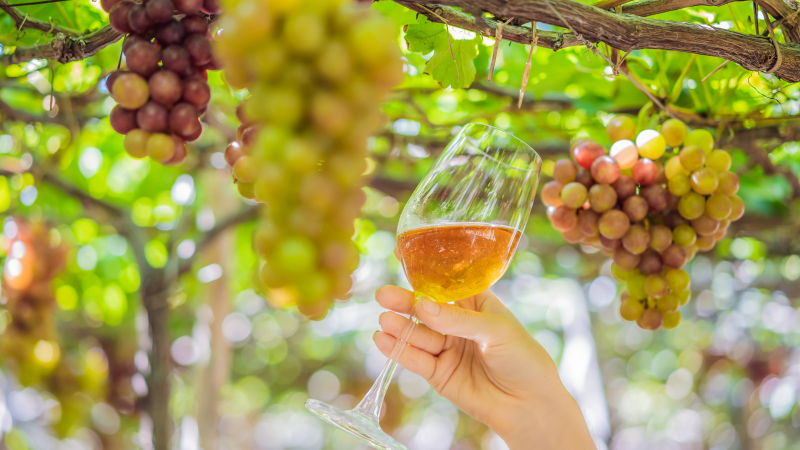
How is it made:
Remember what we told you about the Méthode Traditionelle when it comes to making Champagne (if you missed that education, you can catch up on it here)? Well, we won't repeat ourselves, but that's the method you'll find being used to create this wine. “Crémant” is the French term for traditional-method sparkling wines made outside of Champagne." The producer of Cremant de Bordeaux tells us. "This means that the second fermentation, which gives the wine its bubbles, must happen inside the bottle. That's followed by a minimum ageing period of nine months on spent yeast cells, or lees."
Which grapes are used to make it?
The rules and regs for making Crémant are a little less stringent than Champagne, meaning winemakers are allowed to use a wider variety of grapes, and with eight different regions producing the stuff, each one turns to a different type of grape:
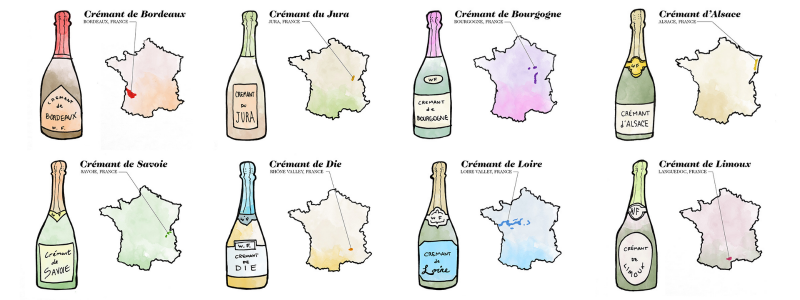
Illustration by The Wine Folly
Crémant d’Alsace: Produced in Alsace and mostly made from Pinot Blanc grapes, but you may also find Pinot Gris, Riesling, Pinot Noir and Chardonnay chilling in those bottles.
Crémant de Limoux: We're heading to the city of Limoux in the Languedoc region (not far from the walled city of Carcassonne) for this variety, where they use Chardonnay, Chenin Blanc, Mauzac and Pinot Noir grapes.
Crémant de Loire: This is a dry sparkling wine mainly produced using Chenin Blanc grapes, but it's not unheard of for them to use Chardonnay, Cabernet Franc, Cabernet Sauvignon and Pineau d’Aunis.
Crémant de Bourgogne: In this region, they use Pinot Noir, Chardonnay and Gamay grapes to create the white or rosé crémants.
Cremant de Bordeaux: In this area of France, they use traditionnal bordeaux grapes to create their crémants, such as Semillon, Muscadelle, Sauvignon blanc, Merlot, Cabernet Franc or Cabernet Sauvignon.
Crémant de Die: This is the Rhone’s sparkling appellation. In this area they use Clairette, Aligote, and Muscat Petit Grains, and the wine, unlike Champagne, as could be.
Cremant du Jura: This particular appelation often contains 50% Chardonnay, and offers a closer approximation in the classic Champagne mold.
Cremant de Savoie: This crémant is intended for immediate consumption rather than cellaring - perfect for anyone as impatient as us. It must contain a minimum of 60% local grapes Jacquère and/or Altesse, and became the eighth crémant appellation in France at the end of 2015.
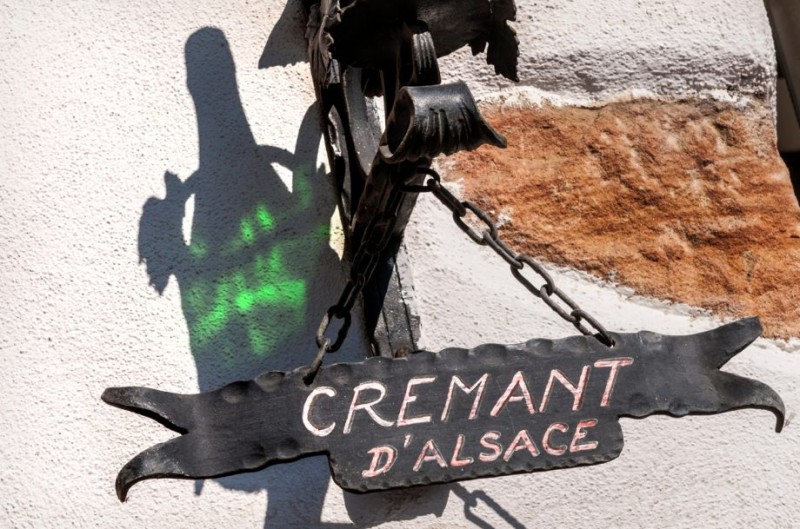
Image credit: Ian Shaw / Alamy Stock Photo
What's the flavour profile?
As the name might suggest, Crémant can bring some creamy vibes to your glass. It's sometimes thought of as slightly more approachable than Champagne - it's a bit lighter, kinda floral and a bit less austere. The Will and Kate to Liz and Phil.
Let's talk money, baby!
Despite being made in the same way as Champagne, AND in the same country, Crémant doesn't come with the same hefty price tag as its fancy cousin. If you're not fussed about the nametag, this is the bottle to nab if you're more of a savvy buyer. We've managed to stock up on bottles for as little as £8 each. Splashing the cash has never been so unnecessary!
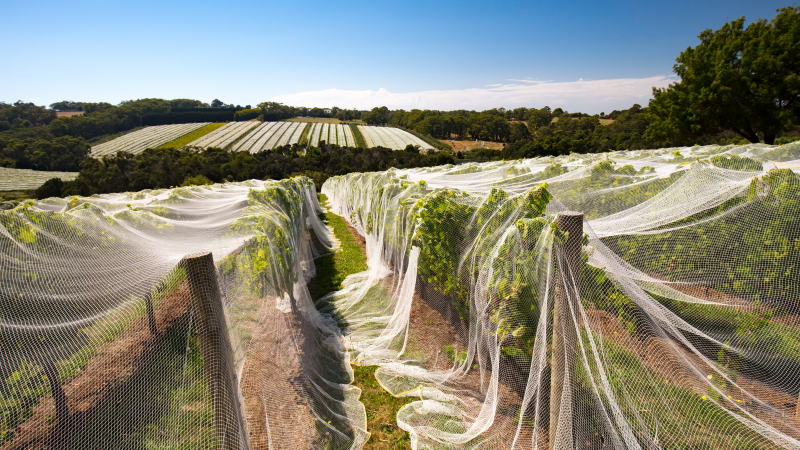
Which bottles should I try?
We asked the producers of Cremant de Bordeaux for their recommendations when it comes to picking a killer crémant. "Customers should look for the ageing time; the more the crémant is aged on leaths, the better." And of course, depending on what you're eating you will have a choice between blanc de blancs (great as an aperitif, or with shellfish) or blanc de noirs, which is more appropriate with salty foods - fried chicken included!
"If you take a Crémant de Bordeaux in blanc de blancs, you will find a very aromatic sparkling with notes of white fruits and exotic notes. If you choose a blanc de noirs, you will find a sparkling with more body and notes of red fruits."
BarChick Loves:
St. JOHN Crémant de Limoux 2019
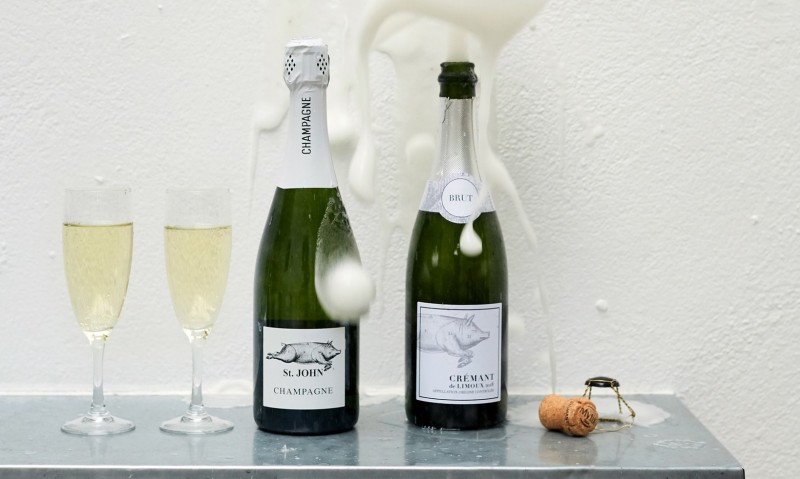
The fact that the legendary restaurant St. JOHN is willing to put their name to this particular bottle is testament enough to its quality. this Crémant de Limoux, is a blend of Chardonnay 70% Chenin Blanc 20% Mauzac 10% grapes, aged on lees for 2 years, making a fresh, generous and very easy to drink fizz that happens to taste divine when paired with one of their iconic doughnuts.
Available from St. JOHN RRP £22
M&S Classics No.12 - Crémant de Bourgogne
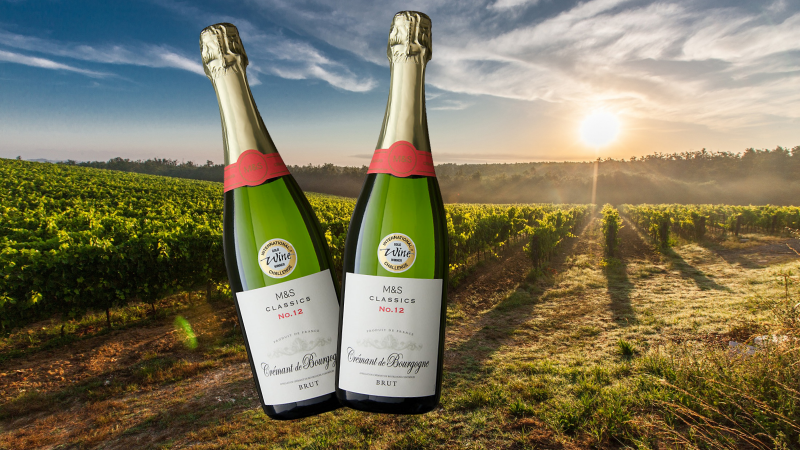
This is not just any Crémant. This is M&S crémant, and it's almost dangerous in its drinkability. With super fine bubbles and a subtle dryness, this blend of carefully selected Pinot Noir, Aligoté, Chardonnay and Gamay grapes is the perfect accompaniment to any celebration, whether it's a Wedding or just a Friday night. And at that price, you can afford to stock up.
Available online RRP £60 per case of 6, or in store £12 per bottle.
Looking to find more in our Sparkling Wine series? Read our Guide to Champagne here, and our Guide to Prosecco here.